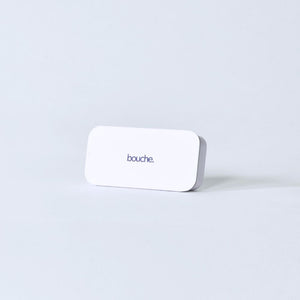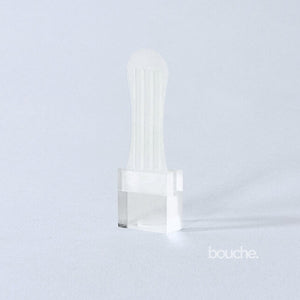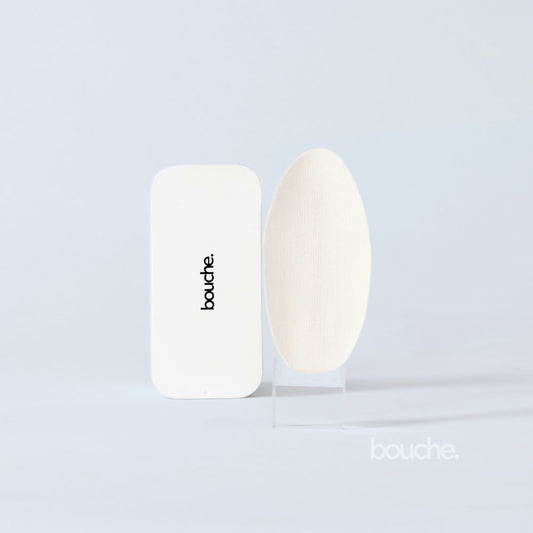Waking up happy in the morning isn’t just luck-it’s a science-backed result of healthy habits, mindful routines, and innovative tools like mouth tape and sleep strips. If you’ve wondered how to wake up happy in the morning, you’re not alone. Many people struggle with grogginess, low energy, or a sour mood at the start of their day. Fortunately, with a few simple practices, you can transform your mornings and set the tone for a positive, productive day.
This guide walks you through nine practical, research-supported habits for waking up happy, including how mouth tape and sleep strips support deeper, more refreshing sleep.
The Importance of a Positive Morning Routine
Your morning routine shapes your mindset, energy, and productivity for the entire day. Studies show that people who start their day with positive habits-such as gratitude, movement, and exposure to natural light-report higher levels of happiness and motivation. A positive morning routine also helps regulate your circadian rhythm, leading to better sleep at night and more consistent energy throughout the day.
Set a Consistent Sleep Schedule
One of the most effective ways to wake up happy is to maintain a regular sleep schedule. Going to bed and waking up at the same time every day-even on weekends-helps regulate your body’s internal clock. This consistency improves sleep quality and makes waking up feel more natural and less abrupt.
- Aim for 7–9 hours of sleep per night.
- Try to keep your bedtime and wake-up time within the same hour each day.
A regular sleep schedule reduces sleep inertia-the grogginess you feel upon waking-and supports better cognitive function throughout the day.
Prepare the Night Before
Waking up happy starts with what you do before you go to bed. A calming evening routine can help you fall asleep faster and wake up feeling refreshed. Consider the following:
- Avoid screens and bright lights at least 30 minutes before bed.
- Practice gratitude by writing down three things you’re thankful for.
- Set out your clothes and prepare a simple breakfast to minimize morning stress.
Going to sleep happy-by ending the day with positive thoughts or gentle music-can make a noticeable difference in your mood the next morning.
Wake Up to Natural Light
Light is a powerful signal for your body’s circadian rhythm. Exposure to natural light in the morning helps suppress melatonin (the sleep hormone) and boosts serotonin, which elevates mood and energy. If possible, open your curtains as soon as you wake up or spend a few minutes outside.
- If natural light isn’t available, consider using a sunrise alarm clock or a daylight lamp to simulate the effect.
Avoid the Snooze Button
While it may be tempting to hit snooze, doing so can actually make you feel groggier. This phenomenon, known as “drockling,” disrupts your sleep cycles and confuses your internal clock. Instead, set your alarm for the time you actually intend to get up and try to rise promptly.
- Place your alarm across the room to encourage movement.
- Choose a gentle alarm sound to avoid abrupt awakenings.
Practice Gratitude
Starting your day with gratitude can shift your mindset and set a positive tone. Research shows that people who practice gratitude regularly experience less stress and greater happiness.
- Write down three things you’re grateful for each morning.
- Reflect on positive moments from the previous day.
This simple habit can help you approach the day with optimism and resilience.
Stretch or Move Your Body
Physical movement in the morning increases blood flow, releases endorphins, and helps shake off sleep inertia. You don’t need a full workout-gentle stretching, yoga, or a short walk can make a big difference.
- Try a few minutes of deep breathing or light stretching as soon as you get out of bed.
- If you enjoy it, add a brisk walk or some bodyweight exercises to your routine.
Eat a Nutritious Breakfast
A balanced breakfast fuels your body and mind, stabilizes blood sugar, and supports sustained energy throughout the morning. Skipping breakfast can lead to irritability, poor concentration, and low motivation.
- Include protein (eggs, yogurt, nuts), complex carbohydrates (whole grains, fruit), and healthy fats (avocado, seeds).
- Hydrate with a glass of water as soon as you wake up, since your body becomes dehydrated overnight.
Limit Screen Time Upon Waking
Checking your phone or email first thing can trigger stress and distract you from mindful morning habits. Instead, give yourself at least 15–30 minutes before engaging with screens.
- Use this time for stretching, gratitude, or a quiet breakfast.
- If you use your phone as an alarm, avoid scrolling through notifications immediately after waking.
Set a Positive Intention for the Day
Take a moment each morning to set a clear, positive intention. This could be a goal, a mantra, or simply a mindset you want to carry with you.
- Repeat a simple affirmation, such as “Today, I will focus on what I can control.”
- Visualize a successful, happy day ahead.
This practice helps anchor your thoughts and actions, making it easier to stay positive and motivated.
Additional Scientific Insights on Mouth Taping and Nasal Breathing
Recent studies highlight the importance of nasal breathing not only for sleep quality but also for overall health. Nasal breathing helps regulate nitric oxide production, a molecule that plays a crucial role in vasodilation, immune response, and oxygen transport. A study published in the American Journal of Respiratory and Critical Care Medicine found that nasal breathing improves oxygen uptake efficiency compared to mouth breathing.
Moreover, mouth taping has been shown to reduce the frequency and severity of sleep-disordered breathing events. A clinical trial in the Journal of Clinical Sleep Medicine demonstrated that mouth taping significantly decreased snoring intensity and improved sleep quality in patients with mild obstructive sleep apnea.
The Role of Sleep Strips in Enhancing Sleep Quality
Sleep strips, similar to mouth tape, support nasal breathing by gently sealing the lips. Research indicates that these strips can reduce mouth breathing and associated symptoms such as dry mouth and throat irritation. A study in the International Journal of Otolaryngology reported that nasal strips improved nasal airflow and reduced snoring in habitual snorers.
How Morning Practices Influence Hormonal Balance
Waking up to natural light and practicing gratitude have measurable effects on hormonal regulation. Exposure to morning light suppresses melatonin production and increases cortisol levels, which helps promote alertness and energy (Wright et al., 2013). Gratitude practices have been linked to lower cortisol levels and reduced stress, contributing to a more positive mood (Wood et al., 2010).
Mouth Taping and Facial Structure
Chronic mouth breathing has been associated with altered facial development, including a narrower palate and less defined jawline. Mouth taping encourages nasal breathing, which supports proper tongue posture and muscle tone, potentially influencing facial aesthetics over time. A review in the Journal of Oral Rehabilitation discussed how breathing patterns affect craniofacial growth and development.
These additional insights reinforce the benefits of incorporating mouth tape and sleep strips into your nightly routine, alongside other positive morning habits, to wake up happy and healthy.
The Science Behind Mouth Tape and Sleep Strips
Why Mouth Tape?
Breathing through your nose is the body’s natural, optimal way to sleep. Mouth breathing, especially at night, can lead to disrupted sleep, snoring, dry mouth, and even changes in facial structure over time. Mouth tape and sleep strips are simple tools designed to gently seal the lips, encouraging nasal breathing throughout the night.
Scientific Benefits
- Improved Sleep Quality: Studies show that mouth taping in people with mild obstructive sleep apnea can reduce snoring and the severity of apnea events by about half (Kotecha et al., 2020).
- Better Hydration: Nasal breathing helps retain up to 40% more moisture, preventing dry mouth and supporting oral health.
- Enhanced Facial Structure: Chronic mouth breathing has been linked to poor jaw development and facial drooping, while nasal breathing supports a more defined jawline and healthier facial structure (Harari et al., 2010).
- Boosted Immunity and Energy: Nasal breathing filters and humidifies air, supporting immune function and delivering more oxygen to the body-helping you wake up energized (Lundberg et al., 1996).
- Reduced Anxiety: Nasal breathing activates the parasympathetic nervous system, promoting calm and deeper, more restorative sleep.
How to Use Mouth Tape and Sleep Strips
- Prep Your Lips: Clean and dry your lips before applying the tape. A light layer of lip balm can add comfort.
- Apply the Strip: Place the tape horizontally across the center of your mouth, sealing gently but securely.
- Sleep Naturally: Breathe through your nose and allow your body to enter deeper sleep cycles.
Premium brands like Bouche design medical-grade, hypoallergenic mouth tape that stays on all night, works with beards and CPAP devices, and is gentle on sensitive skin.
About Bouche: Science-Backed Tools for Happier Mornings
Bouche Wellness Inc. is redefining sleep and wellness with science-backed, non-invasive tools that support better breathing, deeper sleep, and overall vitality. Their flagship mouth tape is meticulously engineered for comfort, safety, and sensitive skin, using hypoallergenic materials and manufactured in North America.
Bouche mouth tape gently encourages nasal breathing, helping users experience:
- Deeper, uninterrupted sleep
- Reduced snoring and dry mouth
- Improved jawline and facial structure
- More energy and mental clarity in the morning
Thousands of customers report waking up happier, more refreshed, and ready to take on the day after adding Bouche mouth tape and sleep strips to their nightly routine. Bouche is also CPAP-compatible, making it an ideal solution for those using nasal masks for sleep apnea.
Conclusion
Waking up happy in the morning is a result of intentional habits, a positive mindset, and healthy sleep practices. By setting a regular sleep schedule, preparing the night before, embracing natural light, and using innovative tools like mouth tape and sleep strips, you can transform your mornings and your overall well-being. Remember, small changes add up-start with one or two practices and build from there. Your happiest mornings are within reach.
Frequently Asked Questions
How to wake up motivated in the morning?
- Plan something enjoyable for the morning, like a walk or a favorite breakfast.
- Set a positive intention or repeat a motivational mantra as soon as you wake up.
How do I stop feeling horrible in the morning?
- Stick to a consistent sleep schedule and avoid the snooze button.
- Hydrate immediately after waking and spend a few minutes stretching.
What helps you wake up better in the morning?
A combination of natural light exposure, movement, and a nutritious breakfast helps you feel alert and happy as you start your day.
Why do I struggle to wake up even after 8 hours sleep?
Sleep inertia, disordered breathing, stress, or inconsistent sleep patterns can cause morning grogginess, even after enough sleep. Try improving your sleep quality and morning routine for better results.
Is mouth tape safe to use every night?
Yes, when used as directed and with skin-safe materials, mouth tape and sleep strips are safe for nightly use and can support better sleep and morning energy.
With these science-backed practices and the support of tools like Bouche mouth tape, waking up happy in the morning can become your new normal.








